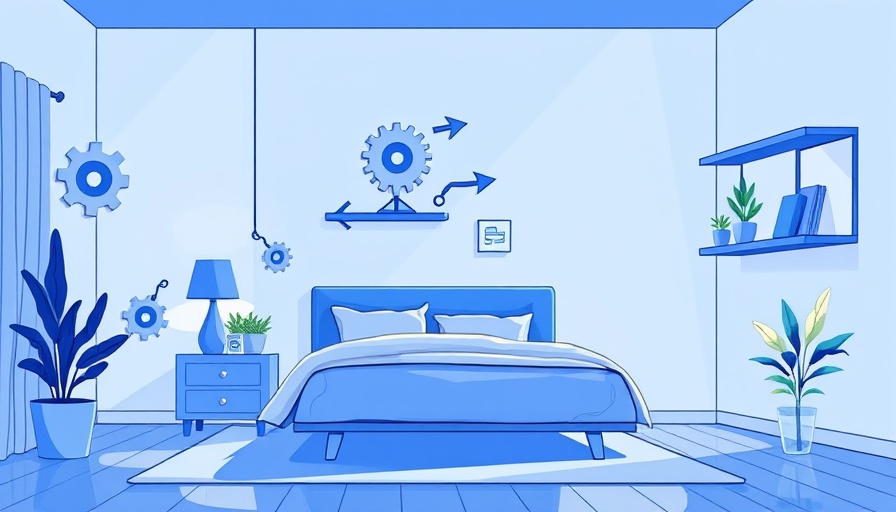
Creating a Maximalist Sanctuary: Practical Insights for Parents
As parents, creating a comfortable, engaging space in your home is crucial, especially when it comes to bedrooms where the evening winds down. Recently, the interior design trend known as maximalism has surged in popularity, turning away from the minimalist approaches of yesteryears. So, what exactly is maximalism?
Understanding Maximalist Style and Its Influences
Maximalism celebrates abundance, color, and personal expression. Think of it as an invitation to showcase what you love through bold colors, layered patterns, and stories from your life. This is essential for parents who want their children's spaces to be reflection zones of their interests and creativity.
Layering Colors and Patterns for a Vibrant Environment
One of the cornerstones of maximalist design is the deliberate use of colors and patterns. For instance, apply the 60-30-10 rule where 60% of your bedroom is a dominant color, 30% a secondary color, and 10% an accent to tie everything together. Mixing textures can enhance the room’s appeal while allowing children to interact with their environment in a way that maintains visual harmony.
Balancing Functionality with Aesthetics
Creating a cozy haven doesn’t mean cluttering the space with random items. True successful maximalism involves thoughtful curation where every piece has a story and purpose. This could be through arranging their favorite toys, showcasing books, or using artwork from family projects. Such arrangements also support sleep quality by making the area feel personal and welcoming.
Emphasizing Personal Expression in Design
For parents looking to instill a sense of individuality in their children, maximalist design encourages embracing collections or even treasured memories. Perhaps your child has mementos from a memorable trip or trophies from school; displaying these can spark joy and memories, creating a restful retreat.
Insights into Sleep Quality and Bedroom Design
While maximalist style is visually appealing, it’s crucial to also consider how the design influences sleep quality. Research shows that a well-organized space can reduce stress, a key component in sleep health. Addressing the sleep environment—like ensuring good air quality and minimizing electronic distractions—is vital. The use of soft lighting and calming accessories may enhance the sleep-wake cycle, promoting restful nights.
Tips and Tricks for Parents: Making it Work
Adopting a maximalist approach does not require extensive budgets. Reuse existing items, visit thrift stores, or swap items with friends to keep costs low while implementing creativity in the design. This budget-friendly approach not only helps build strong family connections but also nurtures recycling behaviors in children.
Mitigating Clutter: The Key to Maximalism
Contrary to common misconceptions, maximalism does not equate to chaos. In fact, the essence of truly maximizing space lies in the intentional layering and grouping of items. Establish clear pathways to prevent the feeling of clutter, ensuring that each piece in the bedroom not only serves an aesthetic purpose but enhances the practicality of the space.
Final Thoughts: Transforming Bedrooms with Maximalism
In today’s fast-paced world, creating an engaging and dynamic environment for children is more important than ever. The blend of maximalist design invites creativity, enhances personal expression, and fosters the perfect setting for rest. By integrating thoughtful design with family values and creativity, parents can develop bedrooms that reflect individuality, support sleep hygiene, and promote overall well-being.
 Add Row
Add Row  Add
Add 




 Add Row
Add Row  Add
Add
Write A Comment